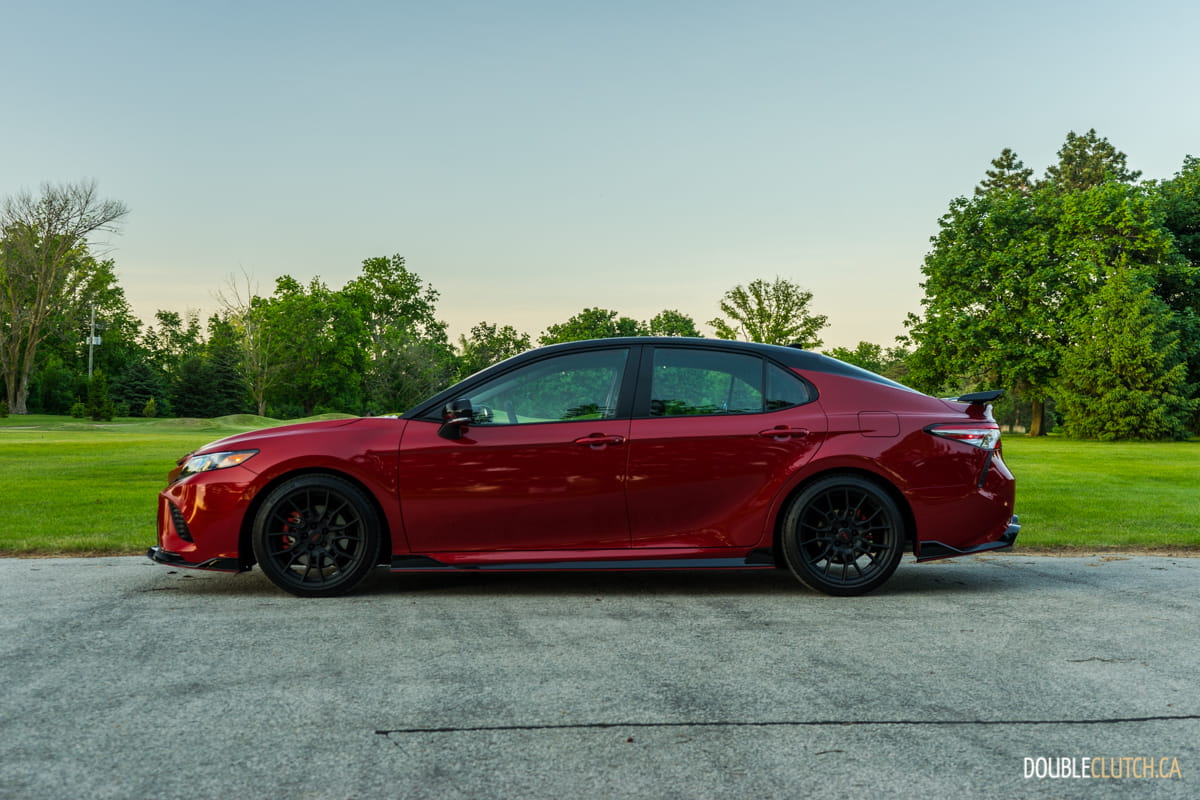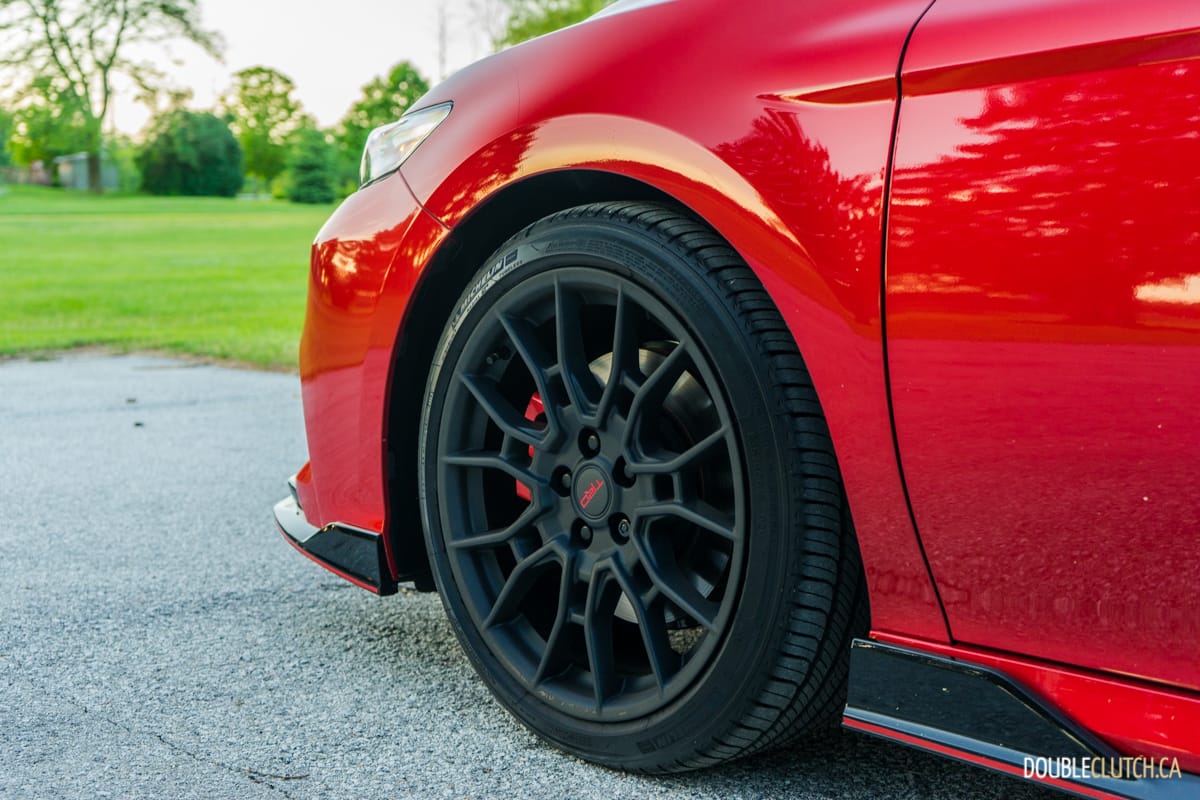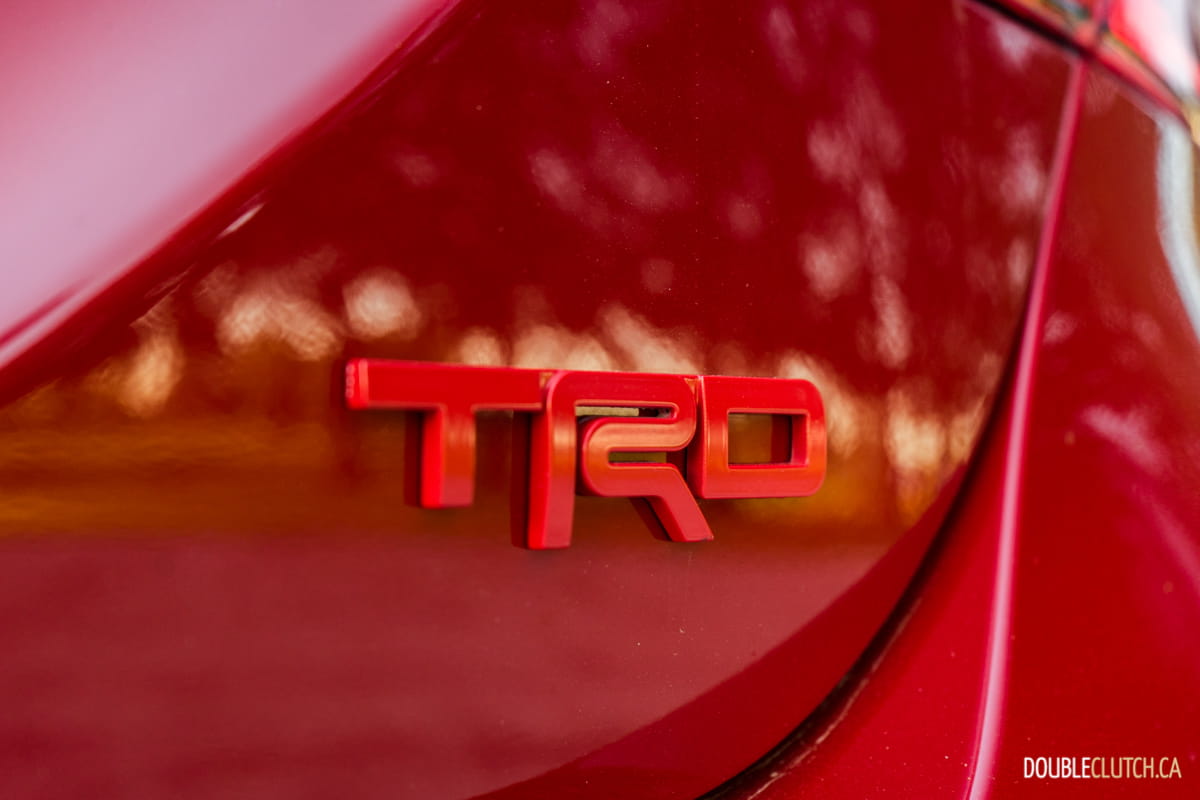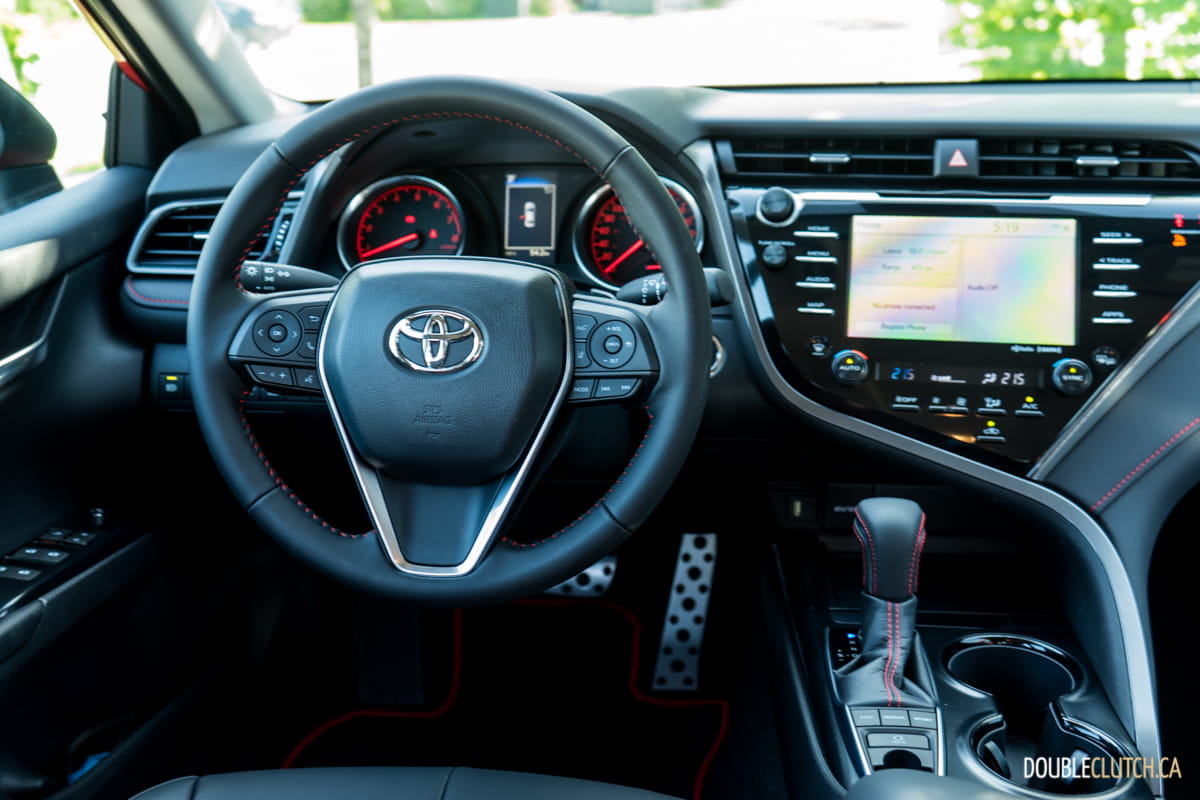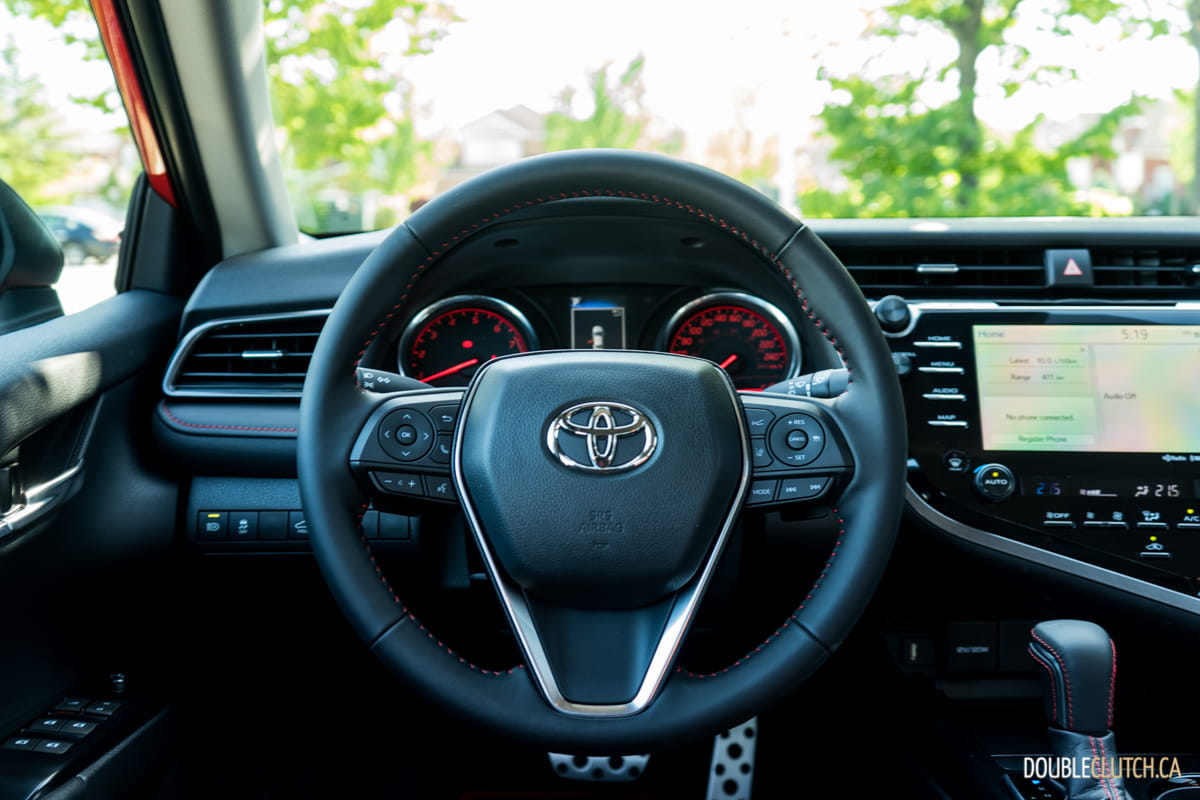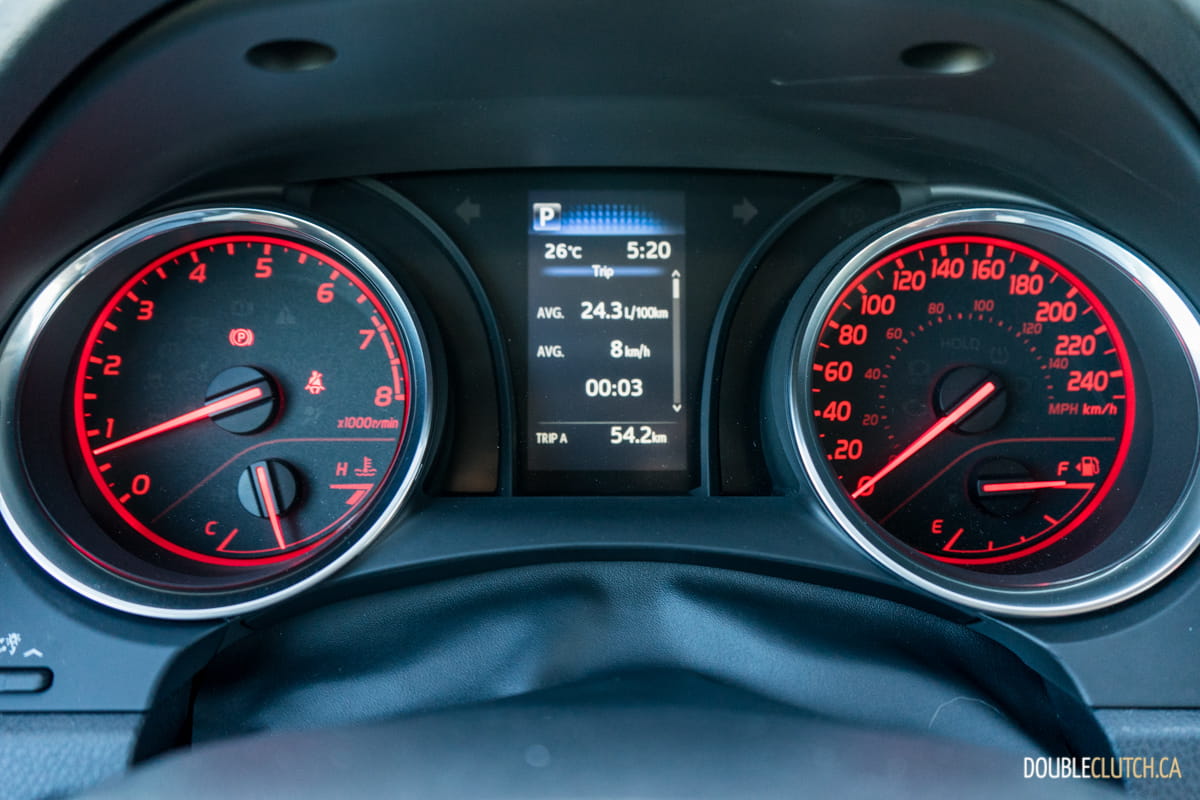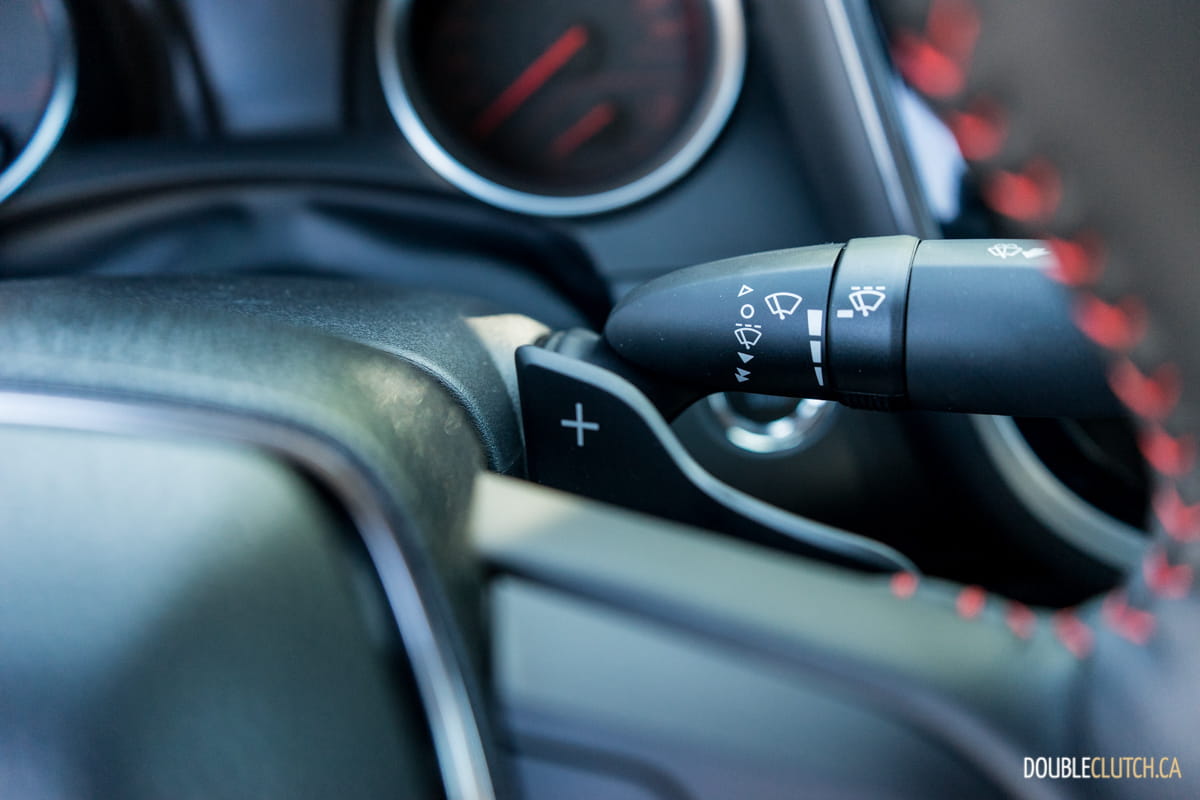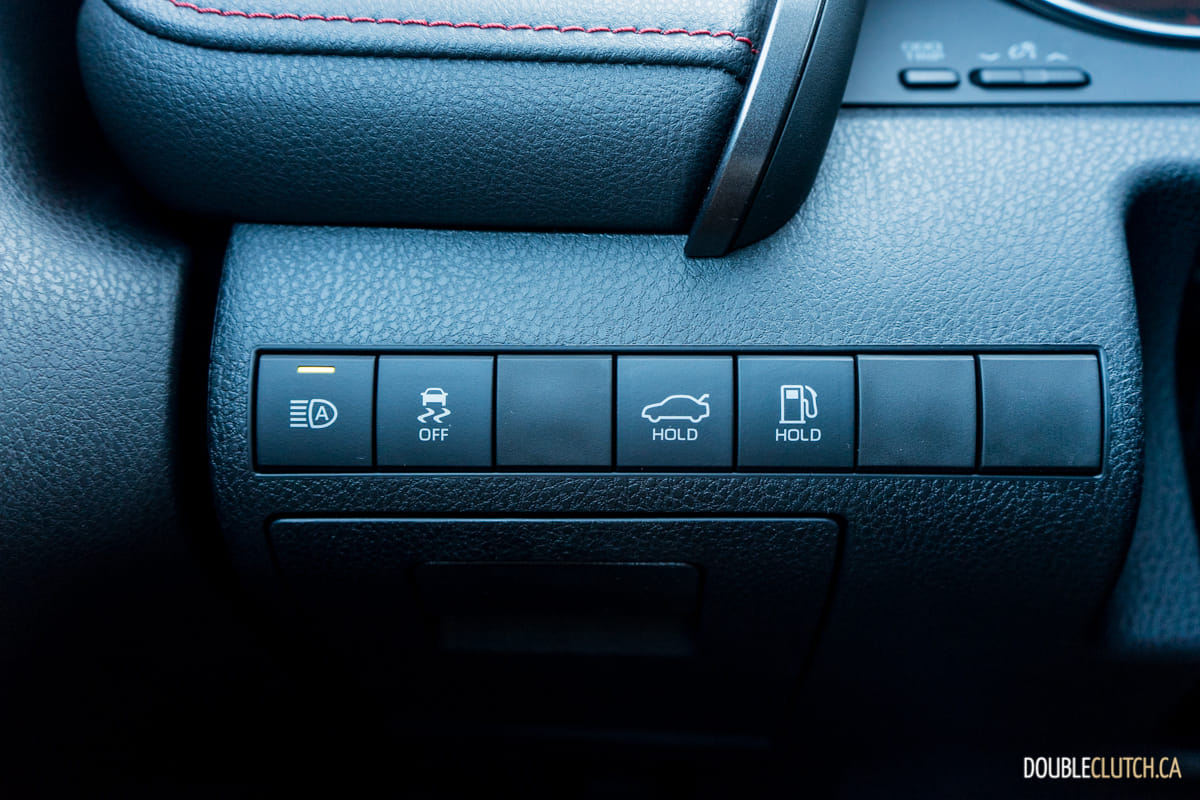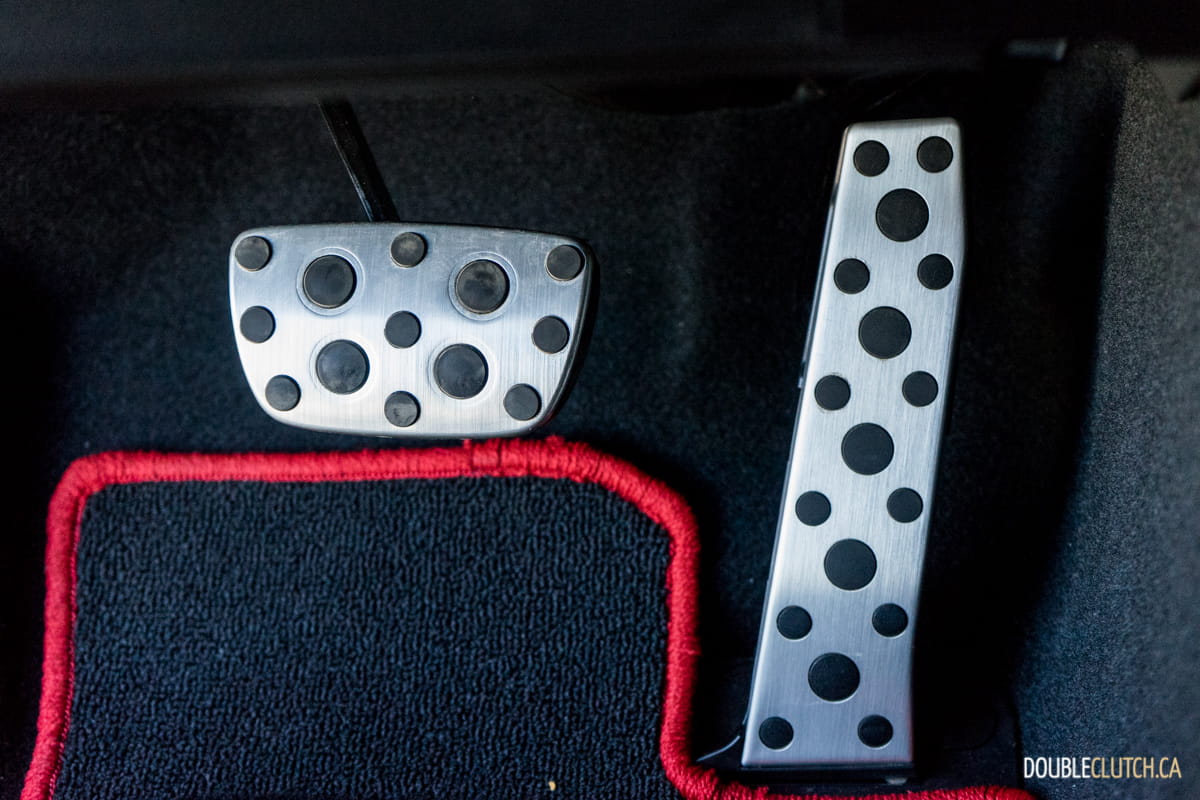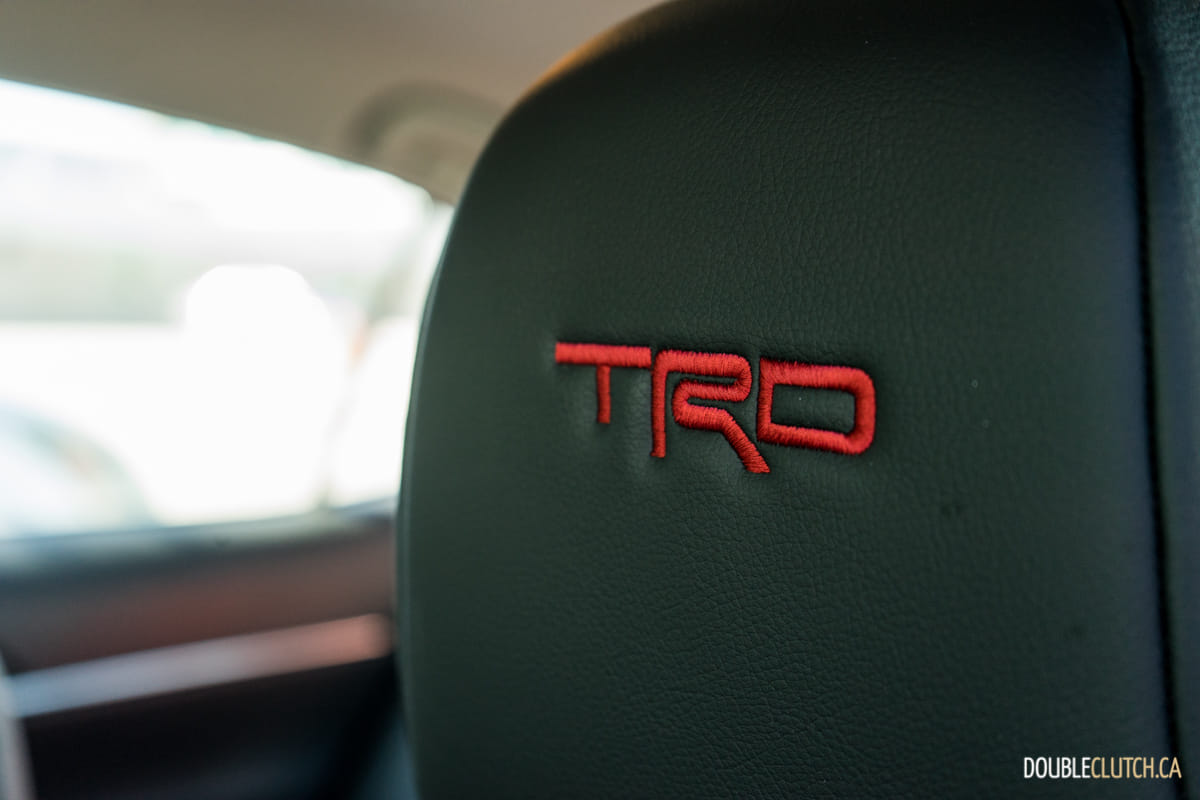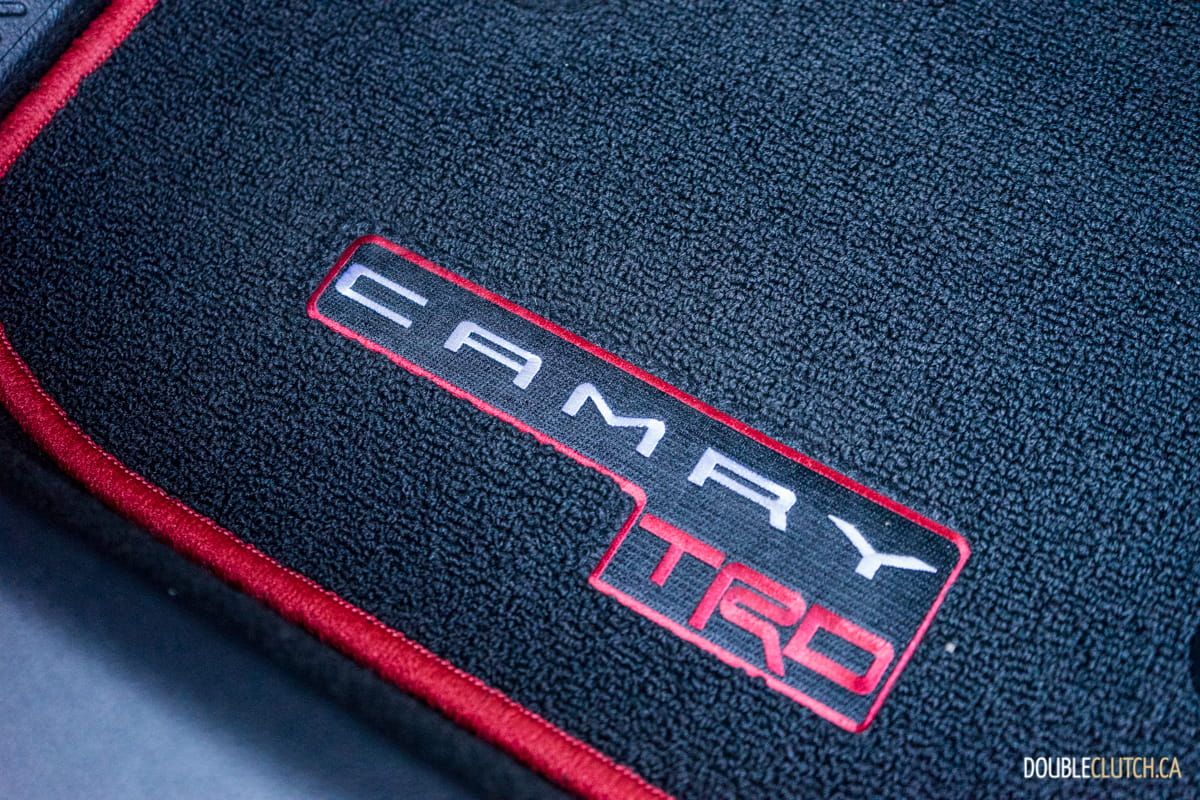Amongst all of the whoop-dee-doo over crossovers and SUVs, some automakers are dropping niche-market surprises for the purpose of entertainment. They target the enthusiast without compromising practicality, and cars like Mercedes-AMG’s E 63 Wagon (reviewed here) are the perfect example of this. Toyota has been similarly knocking it out of the park lately, with the redesigned 2020 Corolla being an absolute joy to toss into corners with sharper steering than any Corolla has offered in my lifetime. This year, they’ve capitalized on being virtually the only manufacturer to offer a midsize sedan with a naturally aspirated six-cylinder powertrain. The 2020 Toyota Camry TRD is the wild Camry that nobody asked for, but many want.
Launched alongside the Avalon TRD that isn’t sold in Canada, the Camry TRD takes the standard midsize sedan with the V6 engine, and strips out a few of the niceties in the XLE and XSE (reviewed here) models. They’ve added visual cues like TRD-specific 19-inch black wheels, a full body skirt package, and a ridiculous wing spoiler on the trunklid. There’s also a rear diffuser, and dual exhaust tips that emit more rumble than the standard XSE. The Camry is already an aggressively styled sedan, so these additions may be a bit much for some. Regardless, the Supersonic Red paint looks great and has some depth to it.
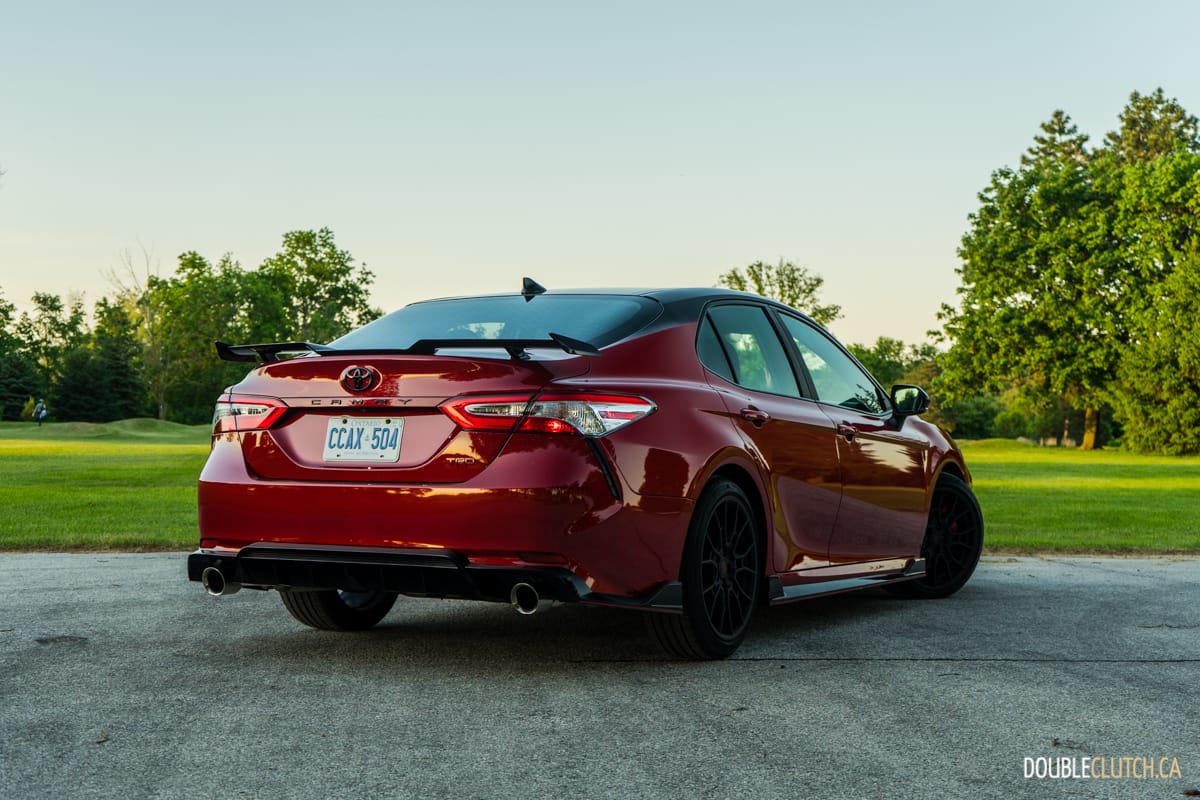
It’s not just all looks either, the Camry TRD has some go to it too. Let’s not forget that we live in a very sad age where the Camry is the only sedan in its segment to offer a naturally aspirated V6. And what a lovely, torquey V6 this 2GR-FKS is, with its 3.5-liters of displacement and buttery smoothness. Output is unchanged from the other V6 models; 301 horsepower at 6,600RPM and 267 lb-ft. at 4,700RPM. It rockets to 100km/h in less than six seconds, and the eight-speed transmission is fairly good, though it does exhibit some confused behaviour leading to delayed shifts in certain situations.
If given the beans off the line, the Camry is eager to light up the front tires, and acceleration this rewarding is not seen anywhere else this side of the Kia Stinger GT (reviewed here) or Genesis G70 3.3T, both with boosted V6s. The cat-back exhaust system on the TRD complements this acceleration with a confident burble, but the downside is that it does drone through the cabin considerably when cruising at highway speed. The brakes are slightly larger than the XSE V6’s, and the TRD gets two-piston calipers. Brake feel is good, but in typical Toyota fashion, the longer pedal travel means more footwork is needed for hard stops.
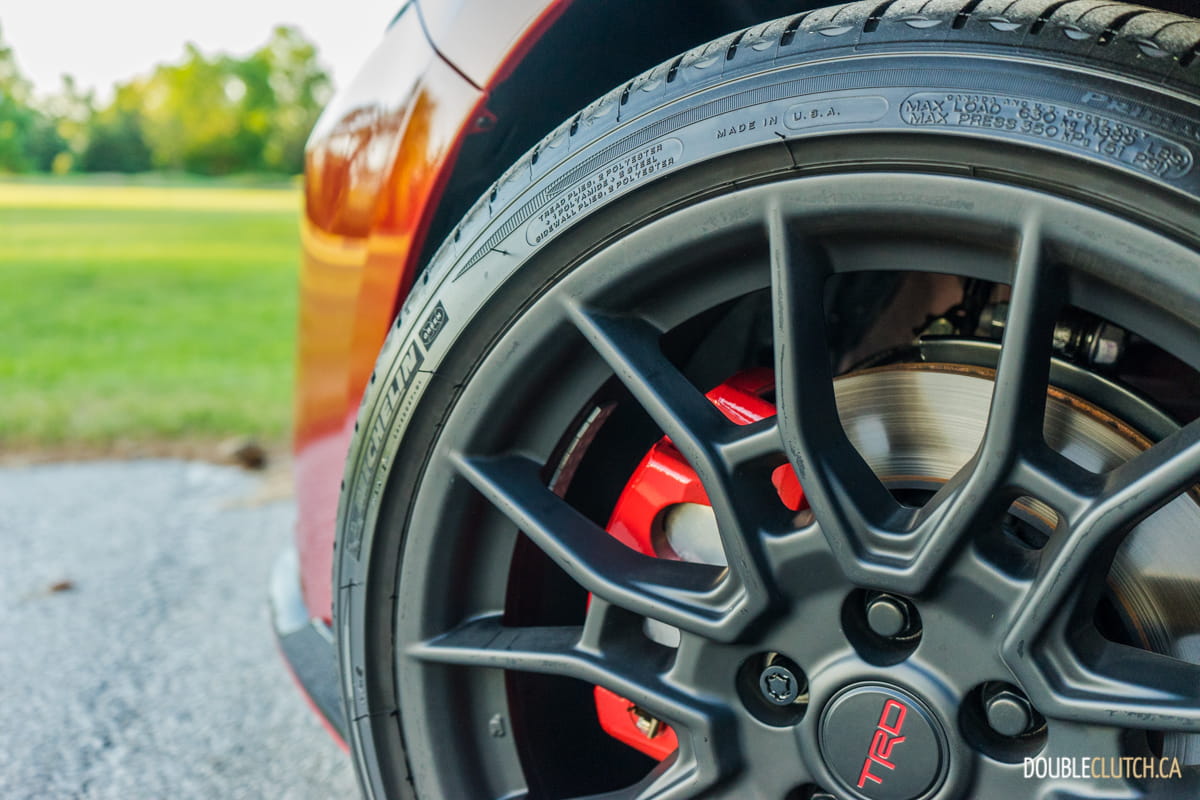
The TRD also gets a stiffer suspension setup and 27.0mm anti-roll bars (over the 25.4mm bars in the XSE). A V-brace behind the rear seats is the reason the seats don’t fold down, and more underbody bracing is implemented as well. As a result, ride quality is definitely firmer than other models in this segment, namely the Accord 2.0T Sport (reviewed here), though the Accord’s chassis is just as good. The Camry’s TNGA platform does mean that it handles exceptionally well, and both the rigid chassis and good steering are familiar characteristics of all vehicles with these underpinnings.
Where things start to go sour, however, is with the tires on our tester. After going to significant lengths to remind buyers that this car is much sportier than its siblings and counterparts, Toyota has put this car on the market with a set of Michelin Primacy MXM4 all-season rubber. They’re not bad tires, but they aren’t performance-oriented in any way. Chucking the Camry TRD into a corner has the chassis responding well, but it can’t do much if the tires are the limiting factor. A good set of performance all-season rubber would go a long way in bringing out the best of this car – we suggest all six buyers make this upgrade immediately. It’s worth noting that Toyota Canada has gone with the Michelins due to better cold weather performance over the Bridgestones fitted by our neighbours to the south.

In order to simplify, save the end user money, and add lightness, Toyota has also removed a few things from the Camry XSE V6 and XLE V6 when designing the TRD model. Missing features include the panoramic sunroof, heads-up display, full leather seats, JBL sound system, wireless charging pad, HomeLink garage door opener, power passenger seat, and folding rear seats. However, interior bits unique to the TRD are aluminum sport pedals, TRD shift knob, red stitching and special fabric and leather combination seats.
That said, the Camry’s interior is by no means poorly designed. The basic ergonomics are just fine, and fit and finish is up to par for the price point in the segment. The plastic airbag cover on the steering wheel does look a bit cheap, and the piano black plastic bezel around the infotainment screen is prone to scratches, fingerprints, and dust. Other than that though, it’s all fine and dandy. The driving position is quite good, the red gauges are clearly legible even in direct sunlight, and the touchscreen is reasonably responsive and offers smartphone connectivity.

Even in a performance car, I’m a guy that enjoys music while driving. Toyota’s JBL system offered throughout their lineup is one of the better examples, and the Mark Levinson setup that Lexus has offered for nearly 20 years still sounds fantastic in my 2004 LS 430 daily driver. The base sound system in this Camry is just not good enough, but is a sacrifice in favour of the significantly lower price point to get the performance bits in this TRD model.
The TRD shares its fuel estimates with the regular XSE V6, and is rated at 10.7L/100km city and 7.4L/100km highway, for a combined 9.2L/100km. We spent a week driving it in average conditions with favourable weather and a complete lack of traffic due to the COVID-19 situation. Our observed average was a generous 10.0L/100km, and the 60-liter tank will accept regular 87-octane fuel without issue.

Toyota Canada aggressively prices the Camry TRD at $35,990, undercutting the $40,490 XSE V6. The closest competitor would be the Accord 2.0T Sport with the automatic, at $35,490. The Accord’s chassis is very good as well, and if you choose the manual transmission, it’s about $1,000 cheaper. Unfortunately, buyers can’t have the best of both worlds – those wanting a manual are stuck with the Accord, and those craving six cylinders are stuck with the Camry. The Mazda6 has crisp driving dynamics and was the engagement benchmark when the current model was introduced for 2014, but has since been surpassed by the competition.
Built specifically for a small target market, the 2020 Toyota Camry TRD is a wonderful sleeper in sheep’s clothing. Actually scratch that – with all of its body enhancements, it can’t in good faith be called a sleeper. It looks fast, and thankfully it’s both fast as well as a sharp handler. Those whose lifestyles can’t justify a dedicated weekend track toy, and require their vehicle to do carpool and T-ball practice duty, will find this to be a truly delightful option. A good set of tires will wake the car right up, and it would be at home on the local autocross circuit. A TRD model of the Camry sounds like a boring, drab idea, but the latest Camry has come far from its bland roots.





